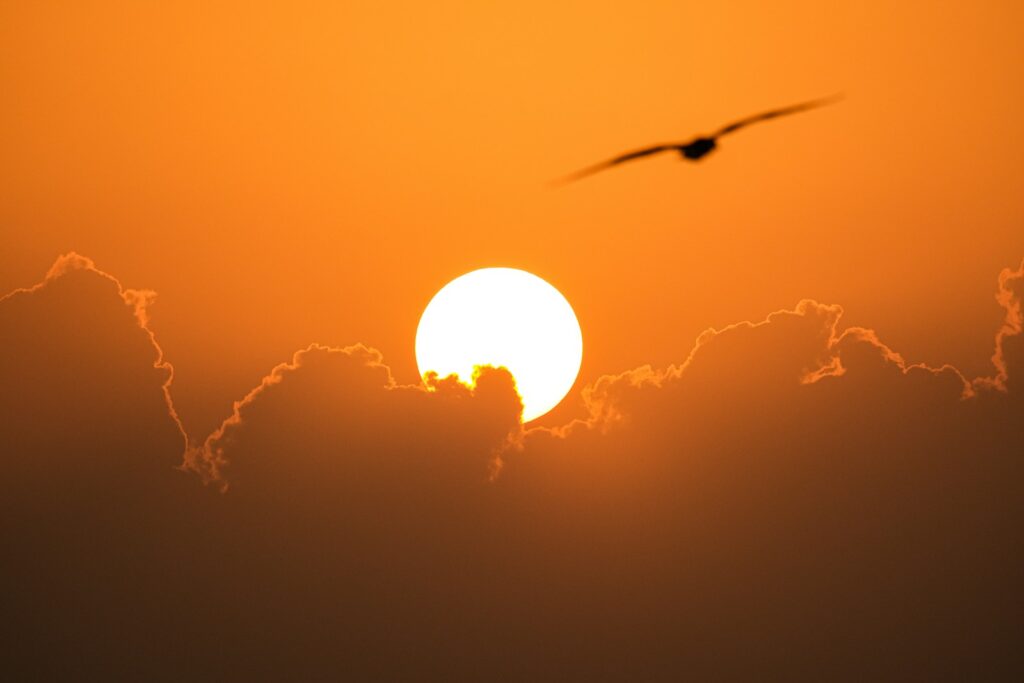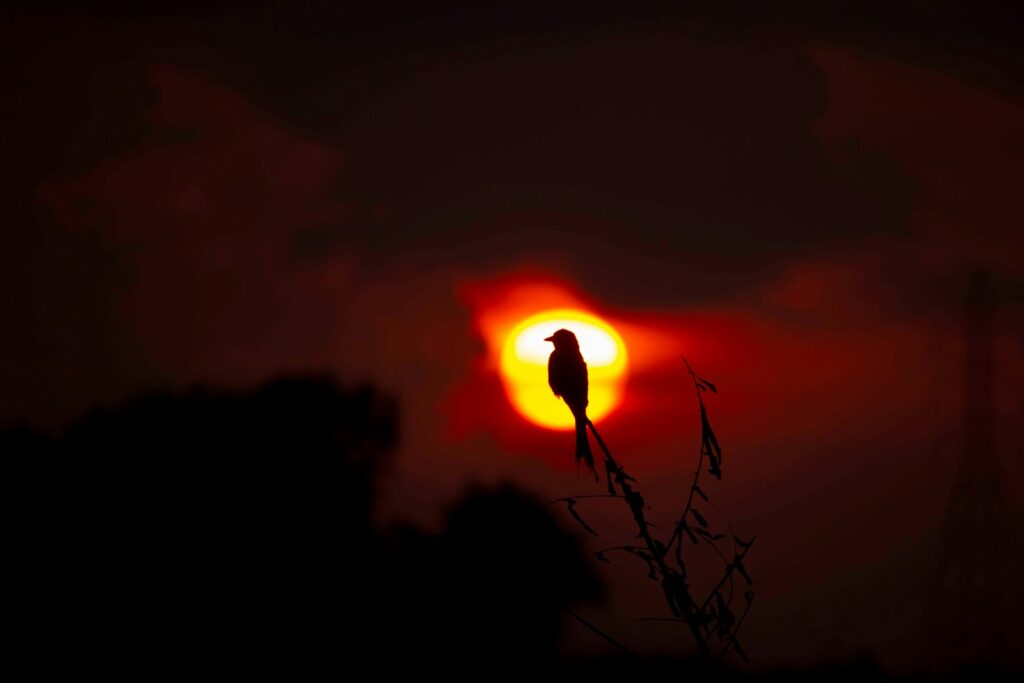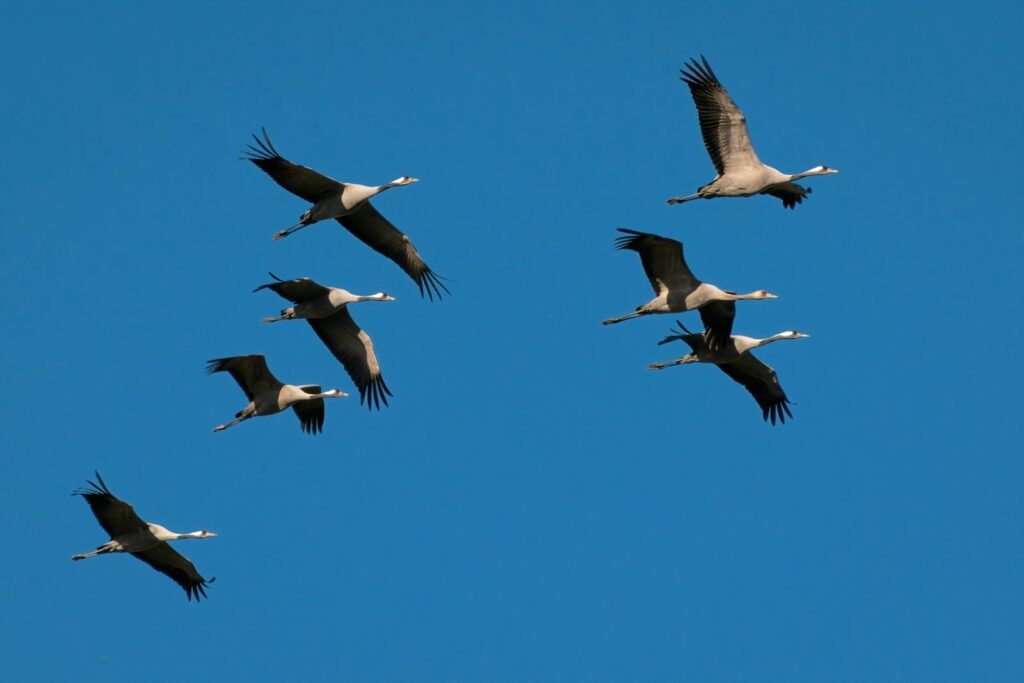In the vast tapestry of natural phenomena, few mechanisms are as precisely calibrated as the biological clocks that govern avian life. Birds, those remarkable feathered navigators of our skies, have evolved sophisticated systems to synchronize their daily activities and seasonal behaviors with the celestial movements above. At the center of this temporal orchestration stands the sun – a cosmic timekeeper that birds have relied upon for millions of years. Unlike mammals who primarily depend on light intensity, birds possess unique adaptations that allow them to extract timing information directly from the sun’s position and movements. This remarkable relationship between birds and our nearest star has fascinated scientists for decades, revealing intricate neurological pathways and behaviors that showcase nature’s ingenuity in solving the challenge of timekeeping.
The Fundamentals of Avian Circadian Rhythms

Birds, like most living organisms, possess internal biological clocks known as circadian rhythms that regulate their physiological processes and behaviors over approximately 24-hour cycles. These internal timekeepers control everything from hormone release and body temperature to feeding patterns and sleep cycles. Unlike the relatively imprecise timekeeping of many organisms, birds maintain exceptionally accurate circadian rhythms, with deviations often measured in minutes rather than hours. This precision stems from their evolutionary need to coordinate complex behaviors like dawn choruses, migration timing, and breeding seasons with environmental conditions. Remarkably, even when kept in constant laboratory conditions without external time cues, most birds will maintain these rhythms for extended periods, demonstrating the robust nature of their internal clocks.
The Avian Pineal Gland: A Specialized Light Sensor

At the heart of birds’ timekeeping abilities lies the pineal gland, a small, pine cone-shaped organ nestled deep within their brains. Unlike in mammals, where the pineal is hidden beneath layers of tissue and skull, the avian pineal gland possesses direct photosensitivity, allowing it to detect light even without input from the eyes. This extraordinary organ contains specialized cells that produce melatonin, a hormone crucial for regulating sleep-wake cycles. During daylight hours, when the pineal detects light, melatonin production is suppressed, signaling wakefulness to the bird’s body systems. As darkness falls, melatonin production increases, preparing the bird for rest and recovery. This direct light sensitivity represents an evolutionary adaptation that allows birds to maintain precise timekeeping even when visual input might be compromised.
Extra-Retinal Photoreceptors: Beyond the Eyes

Birds possess an astonishing feature that sets them apart from most vertebrates – photoreceptors located outside their eyes. These extra-retinal photoreceptors are found in various locations, including the pineal gland mentioned earlier, but also in specialized brain regions like the hypothalamus. Specifically, deep brain photoreceptors containing unique light-sensitive proteins can detect light that penetrates through the thin skull and overlying tissues of birds. These receptors contain melanopsin and other photopigments that respond primarily to blue light wavelengths, which are abundant in daylight but minimal at dawn and dusk. The signals from these photoreceptors bypass the visual system entirely, creating a dedicated pathway specifically for circadian entrainment. This separate light-detection system allows birds to maintain accurate timekeeping even when sleeping or when their eyes are otherwise occupied during activities like feeding or predator avoidance.
The Sun Compass and Directional Information

Birds don’t merely use the sun to tell time – they also extract directional information through what scientists call the “sun compass.” This remarkable ability allows birds to determine geographical direction based on the sun’s position in the sky, accounting for the time of day. The sun compass works because birds can mentally adjust for the sun’s apparent movement across the sky throughout the day, maintaining a consistent sense of direction despite the changing solar position. Research has shown that many species, including homing pigeons and migratory songbirds, use this system as their primary navigational tool during daylight hours. Young birds appear to calibrate this system during development, learning to correlate the sun’s daily arc with other directional cues such as the Earth’s magnetic field. This sophisticated navigational tool demonstrates how birds have evolved to extract multiple types of information from the same celestial source.
Seasonal Responses to Changing Day Lengths

Perhaps one of the most remarkable aspects of avian solar timekeeping is how birds use changing day lengths to coordinate seasonal activities. This process, known as photoperiodism, allows birds to anticipate seasonal changes and prepare accordingly for migration, breeding, molting, and other annual events. As days lengthen in spring, specialized photoreceptors trigger hormonal cascades that activate reproductive systems, nest-building behaviors, and territory establishment. Conversely, shortening day lengths in autumn signal birds to prepare for migration or winter survival strategies. Bird species near the equator, where day length varies minimally, often rely on subtle changes in the sun’s path across the sky rather than day length alone. This solar calendar system is so precise that many birds begin preparations for breeding or migration on nearly the same calendar date each year, regardless of actual weather conditions.
The Role of Skylight Polarization Patterns

The sun provides birds with another sophisticated timekeeping mechanism through polarized light. Sunlight becomes polarized as it passes through Earth’s atmosphere, creating distinctive patterns across the sky that change predictably throughout the day. Birds can detect these polarization patterns with specialized receptors in their eyes, particularly in the ultraviolet-sensitive cone cells of their retinas. This ability offers birds a reliable time reference even when the sun itself is obscured by clouds or when only patches of sky are visible. During dawn and dusk, when polarization patterns are most intense, many birds use this information to fine-tune their internal clocks. Research has shown that migratory birds often use polarized light cues at sunset to recalibrate their compasses before nighttime flights, essentially taking a final navigational reading before departing.
Dawn Choruses: Synchronized Singing

The dawn chorus – that remarkable symphony of bird songs that heralds each new day – represents one of the most beautiful manifestations of solar-synchronized behavior in birds. This daily singing ritual begins precisely at civil twilight, when the first traces of sunlight appear on the eastern horizon, but before the sun itself has risen. Species after species joins this performance in a predictable sequence, with early risers like robins and thrushes typically beginning the chorus, followed by wrens, warblers, and finally later-singing species like doves. This precisely timed behavior demonstrates the extraordinary accuracy of birds’ internal clocks and their ability to detect even the faintest increases in light intensity. The dawn chorus serves multiple purposes, from defending territory to attracting mates, but its precise timing appears to be an adaptation to optimize sound transmission in the still morning air when background noise is minimal.
The Molecular Mechanisms Behind Solar Entrainment

At the cellular level, birds possess an intricate molecular clockwork that responds to solar cues through fascinating biochemical processes. This molecular clock consists of interlinked feedback loops of gene expression and protein production that cycle approximately every 24 hours. When light strikes a photoreceptor, whether in the retina, pineal gland, or elsewhere, it triggers the rapid breakdown of clock proteins like cryptochrome, effectively resetting the molecular oscillator. Bird genomes contain multiple copies of key clock genes, providing redundancy and precision to their timekeeping mechanisms. The molecular clock then controls output genes that regulate physiological processes from metabolism to hormone production. Remarkably, different tissues throughout a bird’s body contain their own semi-autonomous clocks, all synchronized by master oscillators in the brain that receive direct solar input.
Evolutionary Advantages of Solar Timekeeping

The sophisticated solar timekeeping abilities of birds represent millions of years of evolutionary adaptation that has conferred significant survival advantages. Precise synchronization with solar cycles allows birds to optimize their activity patterns, ensuring they forage during periods of maximum food availability while minimizing exposure to predators. For migratory species, accurate timing ensures arrival at breeding or wintering grounds when conditions are most favorable. Many insectivorous birds time their breeding so that their hungry nestlings coincide exactly with seasonal insect population explosions. Solar timekeeping also facilitates social coordination, enabling colonial nesters to synchronize their breeding efforts for better predator defense and resource sharing. Paleontological evidence suggests that these circadian adaptations evolved early in avian history, with fossil records showing that even ancient bird ancestors likely possessed specialized brain regions for light detection similar to modern species.
How Migration Relies on Solar Calibration

Migratory birds undertake some of the most impressive journeys in the animal kingdom, and solar calibration stands as a critical component of their navigational toolkit. Before departing on long-distance migrations, many species undergo a period of “zugunruhe” or migratory restlessness, triggered by changing day lengths that indicate the appropriate season for travel. During migration itself, birds use the sun’s position to maintain direction, constantly recalibrating their internal compass as the sun moves across the sky. Night-migrating species take celestial readings at sunset that they then integrate with their stellar and magnetic navigation systems. Young birds on their first migration appear to have an innate ability to interpret solar directional information, though they refine this skill with experience. Research using orientation cages has demonstrated that manipulating the apparent position of the sun using mirrors can predictably alter a bird’s directional choices, confirming the critical role of solar cues.
Disruptions to Natural Solar Rhythms

In our modern world, human activities increasingly disrupt the solar cues birds have evolved to rely upon. Light pollution from cities, streetlights, and buildings creates artificial daylight conditions that can severely impact avian biological rhythms and behaviors. Birds exposed to artificial light at night often show disrupted sleep patterns, altered hormone levels, and confusion during migration. Some species begin their dawn choruses abnormally early near artificial lights, potentially depleting their energy reserves and disrupting breeding patterns. Climate change presents another challenge, as it alters the relationship between day length and actual environmental conditions, potentially creating mismatches between birds’ solar-triggered behaviors and ecological realities. Conservation efforts increasingly recognize the importance of protecting natural light cycles, with some cities implementing “dark sky” initiatives during migration seasons to reduce these impacts.
Research Techniques for Studying Avian Solar Timekeeping

Scientists employ a fascinating array of techniques to investigate how birds use solar cues for timekeeping. Laboratory studies often utilize light-controlled environments where researchers can manipulate day length, light intensity, and spectral composition to observe impacts on birds’ physiology and behavior. Field researchers employ miniaturized light loggers attached to birds that record light levels throughout the day, allowing scientists to reconstruct not only location but also activity patterns relative to sunrise and sunset. Sophisticated brain imaging techniques now permit visualization of neural activity in response to different light stimuli, revealing which brain regions process solar information. Genetic studies identifying clock genes and their expression patterns have revolutionized our understanding of the molecular basis of avian timekeeping. Perhaps most creatively, some researchers use planetarium settings to simulate different celestial configurations, allowing them to test how birds respond to manipulated sun positions and light polarization patterns in controlled settings.
The Future of Solar Timekeeping Research

The field of avian solar timekeeping continues to evolve with exciting new research directions. Scientists are increasingly investigating how birds might adapt their solar-dependent behaviors in response to climate change, with preliminary evidence suggesting some species may be shifting their timing based on temperature cues rather than solely relying on day length. Advances in miniaturized neurological monitoring equipment promise to reveal how wild birds’ brains process solar information during actual navigation and migration. Genetic techniques are enabling researchers to compare clock genes across different bird species, potentially revealing how various avian groups have evolved specialized adaptations to particular light environments. Collaborative efforts between ornithologists and space scientists are exploring how birds might respond to cosmic events that affect solar radiation, such as solar flares or eclipses. As technology advances, our understanding of the intimate relationship between birds and the sun will undoubtedly deepen, potentially offering insights that extend beyond ornithology into fields from neuroscience to chronobiology.
The relationship between birds and the sun represents one of nature’s most elegant solutions to the challenge of timekeeping. Through specialized organs, extra-retinal photoreceptors, and sophisticated molecular mechanisms, birds have evolved to extract precise temporal information from solar cues. This remarkable ability synchronizes their daily activities, annual cycles, and navigational systems with the world around them. As we continue to unravel the mysteries of avian solar timekeeping, we gain not only a deeper appreciation for these feathered marvels but also insights that may inform fields from medicine to technology. Yet this research also carries an urgent message – the importance of protecting natural light cycles in an increasingly illuminated world. The ancient dance between birds and the sun reminds us that even in our modern era, the fundamental rhythms of nature continue to orchestrate life on Earth.
